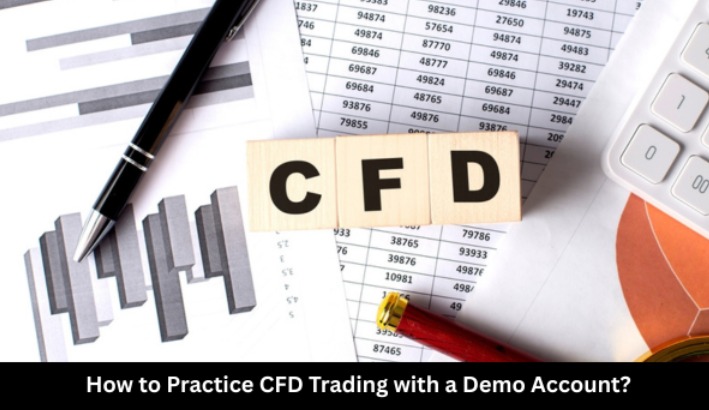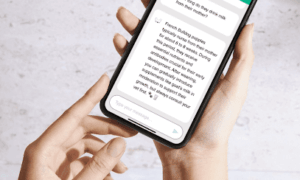CFD trading has been on the minds of almost every trader. And it’s easy to see why. The idea of speculating on the price movement of an asset without even owning the actual asset opens a world full of opportunities. Also, it is fast-paced, flexible, and has huge potential.
But one thing that we should never forget is that we all know trading involves risk, and CFD trading also comes with its share of risk, particularly the financial ones. And for someone who’s just starting, the thought of putting real money on the line can be overwhelming.
That is why a demo account is the perfect place to start, especially when it comes to CFD trading. You can think of it as a safe, virtual playground where you are able to test endless strategies, understand the market, and build confidence, all without losing your money. In this blog, we will learn how to start CFD trading on a demo account and why it makes a big difference.
What is CFD Trading?
CFD or Contract for Difference is a type of trading where you don’t actually own the asset, instead, you simply speculate on whether the price of that particular asset will go up or down.
You can understand it with an example: Consider you are trading CFD stocks, then it means that you are not buying the actual shares of that publicly listed company. Instead, you are just making a deal (a contract) with a broker about the price direction. Now, if the price of the stock goes in the direction that you predicted, you make a profit. And, if it goes the other way, you take a loss.
This doesn’t sound exciting.
Honestly, yes! It is exciting, but it can also be risky. That is why experts always suggest practising it on a demo account first.
Why use a demo account to practice CFD trading?
It can’t be denied that jumping into live trading without practice is like playing cricket without learning how to hold the bat.
Right?
But, with a demo account to practice CFD trading, you can:
- understand how CFD trading works.
- learn how to read charts and indicators.
- test different strategies in a risk-free environment.
- get comfortable with a specific trading platform.
- develop discipline and control your emotions.
Most important of all, it can give you the chance to check if CFD trading is something that you actually enjoy and want to pursue seriously in future or not.
How to practice CFD trading with a demo account?
Here is a step-by-step guide on how you can practice trading CFDs on a demo account:
Step 1: Choose a Broker: This is one of the most important steps, as your broker makes a huge difference. To choose one, you need to look for a broker that offers demo trading, preferably someone who also lets you trade real CFD stocks later whenever you are ready. Also, you need to make sure the platform is user-friendly and provides access to a wide range of markets.
Step 2: Sign Up for a Demo Account: There are a lot of brokers who do not want you to spend hours signing up. Thus, they have a simple sign-up procedure that can be done in a few minutes. You will typically just need your name, email, and a password.
Plus point: There is no need to deposit real money at this stage.
Step 3: Explore the trading platform: Now, after the sign-up is complete, you should spend some time clicking around. At this point, check out:
- The layout of the dashboard of the platform.
- Where can you find the CFD instruments (like stocks, indices, or forex)?
- How to open and close a trade?
- Where to find charts and analysis tools?
Such familiarity with the platform can eventually help you avoid common or easy mistakes later.
Step 4: Start placing your trades: If you are familiar with the interface of the platform, it’s time to try opening a trade on a few different markets. Try to predict whether a price will go up or down for different assets and see how the numbers move.
Also, don’t worry about getting it perfect in the very first place because you need to remember that this is the time to experiment and learn.
Step 5: Track your progress: One of the best ways to learn is to pay attention to which trades went well and which didn’t.
Check these:
- Was your analysis correct?
- Did you enter or exit too early?
There are a lot of demo platforms that also offer trade history and performance tracking. You can make use of these features or keep a trading journal.
Step 6. Practice risk management: Risk management should never be avoided. Even with a demo account where you are trading with fake money, you should practice using stop-loss and take-profit levels. These tools will help in limiting your losses and locking in gains. So, building this habit now will help protect your real funds later.
Step 7. Try and test different strategies: Use the demo period to test various trading styles. You can try strategies like day trading, swing trading, or using indicators to see what fits your personality and schedule the best.
Conclusion
To conclude, practising CFD trading with a demo account is one of the smartest ways to start your trading journey. It gives you experience, builds your confidence, and helps you avoid common beginner mistakes. No matter if you are interested in CFD stocks, commodities, or forex, a demo account helps you learn by doing without the pressure of real losses.



































